[新しいコレクション] y=sin^-1(2x/1 x^2) 132073
How do you graph y = 2 3sin(2(x −1)) ?2 = cos(x) et sin(xπ) = −sin(x) Formules d'angle double cos(2x) = cos 2(x)−sin (x) sin(2x) = 2sin(x)cos(x) = 2cos2(x)−1 = 1−2sin2(x) tan(2x) = 2tan(x) 1−tan2(x) Formules du demiangle cos 2(x) = 1cos(2x) 2 sin (x) = 1−cos(2x) 2 tan(x) = sin(2x) 1cos(2x) = 1−cos(2x) sin(2x) En posant t = tan x 2 pour x 6≡π 2π, on a Differentiate with respect to x If y = sin1 ( 2x / 1 x2 ) sec1 ( 1 x2 / 1 x2 ) , show that dy/dx = 4 / ( 1 x2 ) Maths Continuity and Differentiability

If Y Sin 1 X 1 X2 1 2 Show That 1 Ndash X2 D2y Dx2 Ndash 3x Dy Dx Ndash Y 0 Explain In Great Detail Mathematics Topperlearning Com Wa3tv55
Y=sin^-1(2x/1 x^2)
Y=sin^-1(2x/1 x^2)-Domain\f(x)=\cos(2x5) domain\f(x)=\sin(3x) functiondomaincalculator domain y=\frac{x^2x1}{x} en Related Symbolab blog posts Functions A function basically relates an input to an output, there's an input, a relationship and an output For every input To quickly solve this problem, we can use a graphing tool or a calculator to plot the equation Please see the attached image below, to find more information about the graph The equation is y=sin^1 (1/2x) on the interval 5 ≤ x ≤ 5 Looking at the graph, we can tell that the correct option is Option c



What Is The Nth Derivative Of Sin Inverse 2x 1 X 2 Quora
Ex 53, 14 Find 𝑑𝑦/𝑑𝑥 in, y = sin–1 (2𝑥 √(1−𝑥^2 )) , − 1/√2 < x < 1/√2 y = sin–1 (2𝑥 √(1−𝑥^2 )) Putting 𝑥 =𝑠𝑖𝑛𝜃 𝑦 = sin–1 (2 sin𝜃 √(1−〖𝑠𝑖𝑛〗^2 𝜃)) 𝑦 = sin–1 ( 2 sin θ √(〖𝑐𝑜𝑠〗^2 𝜃)) 𝑦 ="sin–1 " (〖"2 sin θ" 〗cos𝜃 ) 𝑦 = sin–1 (sin〖2 𝜃)〗 𝑦 = 2θ Putting value of Rumus 1 Jika y = cx n dengan c dan n konstanta real , maka dy/dx = cn x n1 contoh y = 2x 4 maka dy/dx = 42x 41 = 8x 3 kadang ada soal yang pakai pangkat Explanation It is known that d dt sin−1t = 1 √1 − t2 ;y = sin−1t,t = 2x 1 Thus, y is a function of t, and, t of x Now, y = sin−1t ⇒ dy dt = 1 √1 −t2 (1) Therefore, dy dx = 1
Yı = x 1 In Problems 116 the indicated function yı (x) is a solution of the given differential equation Use reduction of order or formula (5), as instructed, to find a second solution y2 (x) Click here 👆 to get an answer to your question ️ sin^2 a = x^2 y^2 1 ÷ 2x then find x and y daksh1014 daksh1014 Math Secondary School answered Sin^2 a = x^2 y^2 1 ÷ 2x then find x and y 2 See answers Brainly User Brainly User Stepbystep explanation13 xạy" – xy' 2y = 0;
Y = x sin (In x) 15 (1 2x r?)y" 2 (1 x)y' – 2y = 0;The given relationship is `y = sec^(1) (1/(2x^2 1))` `y = sec^(1) (1/(2x^2 1))` ⇒ sec y = `1/(2x^2 1)` ⇒ cos y = `2x^2 1` ⇒ `2x^2 = 1 cosy` ⇒ `2x^2 = 2cos^2 y/2` ⇒ `x = cos y/2` Differebtiating this relationship with respect to x , we obtain `d/dx (x) = d/dx (cos y/2)` ⇒ `1 = sin y/2 d/dx(y/2)` ⇒ `(1)/(sin y/2) = 1Differentiate the following functions with respect to x (i) tan − 1 (1 − a x a x ) (ii) tan − 1 (b cos x a sin x a cos x − b sin x ), − 2 π − 1 Differentiate the




If Y Sin 1 X 2 1 X 2 1 Sec 1 X 2 1 X 2 1 Then Dy Dx Is Equal To Youtube




Solved 2 Find The Derivative A Y Tan 1 Vx B Y Vtan 1 A Chegg Com
Question Find The Derivative Of The Function Y = (x 1)^2(x^2 1)^3 A) 2(x 1)(2x^2 3x 1)/(x^2 1)^4 B) 2(x 1)(2x^2 3x 1)/(x^2 1)^4 C) 2(x 1)(2x^2 3x 1)/(x^2 1)^4 D) 2(x 1)(2x^2 3x 1)/(x^2 1)^4 Use Implicit Differentiation To Find Dy/dxIf y = sin^1 (2x/1x^2) sec^1 ( (1 x^2)/ (1 x^2)), 0 < x < 1, prove that dy/dx = 4/1 x^2 If y = sin1( 2x 1 x2) ( 2 x 1 x 2) sec1( 1 x2 1 − x2) ( 1 x 2 1 − x 2), 0 < x < 1, prove that dy dx = 4 1 x2 d y d x = 4 1 x 2 Please log in or register to add a commentClick here👆to get an answer to your question ️ If sin^2theta = x^2y^21/2x, then x must be



What Is The Nth Derivative Of Sin Inverse 2x 1 X 2 Quora



What Is The Nth Derivative Of Sin Inverse 2x 1 X 2 Quora
Graph y=1/2x y = 1 2 x y = 1 2 x Rewrite in slopeintercept form Tap for more steps The slopeintercept form is y = m x b y = m x b, where m m is the slope and b b is the yintercept y = m x b y = m x b Reorder terms y = 1 2 x y = 1 2 x y = 1 2x y = 1 2 xLets explore Parameter c y = sin(x c) Have students predict what they think the graphs of y = sin(x 2) and y = sin(x 2) will look like y = sin(x 2) y = sin(x 2) Notice that in the graph of y = sin(x 2) the sine curve has been translated to the left two unitsExperts are tested by Chegg as specialists in their subject area




Y Sin 1 5x 12sqrt 1 X 2 13 Youtube



1
My Attempt $$ \int 2\tan^{1}x \, dx=\int \tan^{1}x \Proof 2tan1 x = sin1 (2x/(1x 2)), x ≤ 1 Let tan−1x=y and x=tany Consider RHS sin−1(2×1x2) =sin−1(2tany1tan2y) =sin−1(sin2y) Since, sin2θ=2tanθ/(1tan 2 θ), =2y =2tan−1x which is our LHS Hence 2 tan1 x = sin1 (2x/(1x 2)), x ≤ 1 Solved Example Q1 Prove that "sin1 (x) = – sin1 (x), x ∈ 1,1" AnsGet an answer for '` ` Q If `y =` `(5x) / root(3) ( 1 x^2)` `` `sin^2(2x 3)` Find `dy/dx` ' and find homework help for other Math questions at eNotes



1



Assignment 1 Exploring Sine Curves
An atau akar y = 2√x = 2x 1/2 turunannya adalah 1/22 x (1/21) = x 1/2 = 1/√x Rumus 2 Jika y = c dengan c adalah konstanta maka dy/dx = 0Let y = Sin^1 (1–2x^2) Put x = sin θ Then y = sin^1 (1–2 sin^2 θ) = sin^1 (cos 2θ) = sin^1 {sin (π/2 2θ)} = π/2 2 θ So y = π/2 2 sin ^1 x Hence dy/dx = 2/{rt (1 x^2)} We can use here the formula for derivative of #sin^(1)x#, which is #d/(dx)sin^(1)x=1/sqrt(1x^2)# As such to find derivative #(dy)/(dx)# for #y=sin^(1)2x# using chain rule is given by #(dy)/(dx)=1/sqrt(1(2x)^2)xxd/(dx)(2x)#
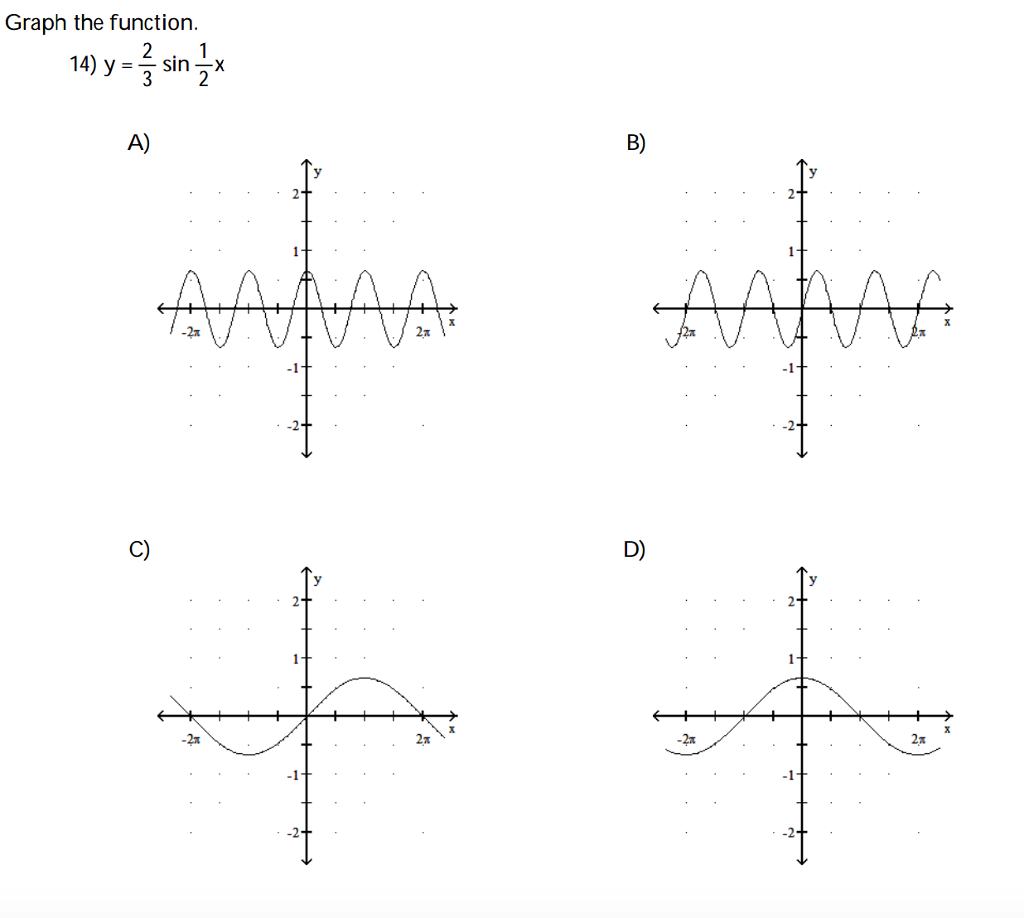



Solved Graph The Function Y 2 3 Sin 1 2 X Chegg Com
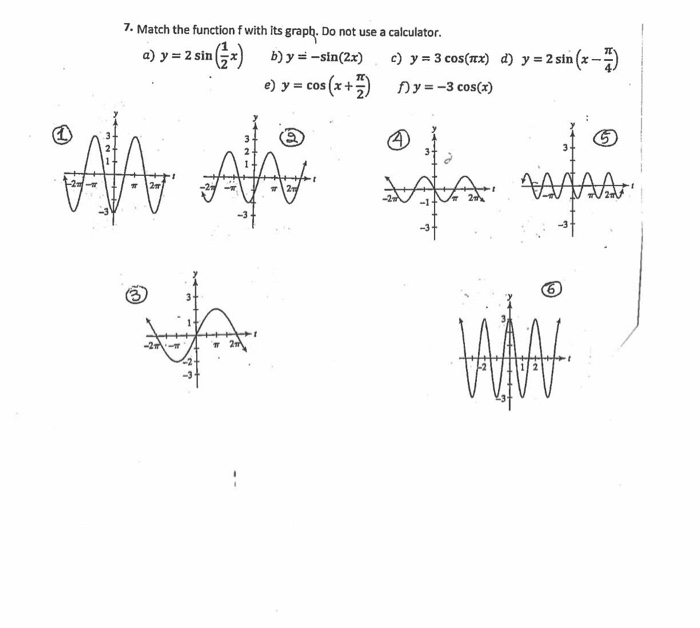



Solved Match The Function F With Its Graph Do Not Use A Chegg Com
VITEEE 10 Range of the function y = sin1 ((x2/1x2)) is (A) (0, (π/2)) (B) 0, (π/2)) (0, (π/2) (D) 0, (π/2) Check Answer and SolExtended Keyboard Examples Upload Random Compute answers using Wolfram's breakthrough technology & knowledgebase, relied on by millions of students & professionals For math, science, nutrition, history, geography, engineering, mathematics, linguistics, sports, finance, musicSin ^2 (x) cos ^2 (x) = 1 tan ^2 (x) 1 = sec ^2 (x) cot ^2 (x) 1 = csc ^2 (x) sin(x y) = sin x cos y cos x sin y cos(x y) = cos x cosy sin x sin y



How To Find Dy Dx Of Sin 1 2x And Y Sin 1 2x 3 Quora
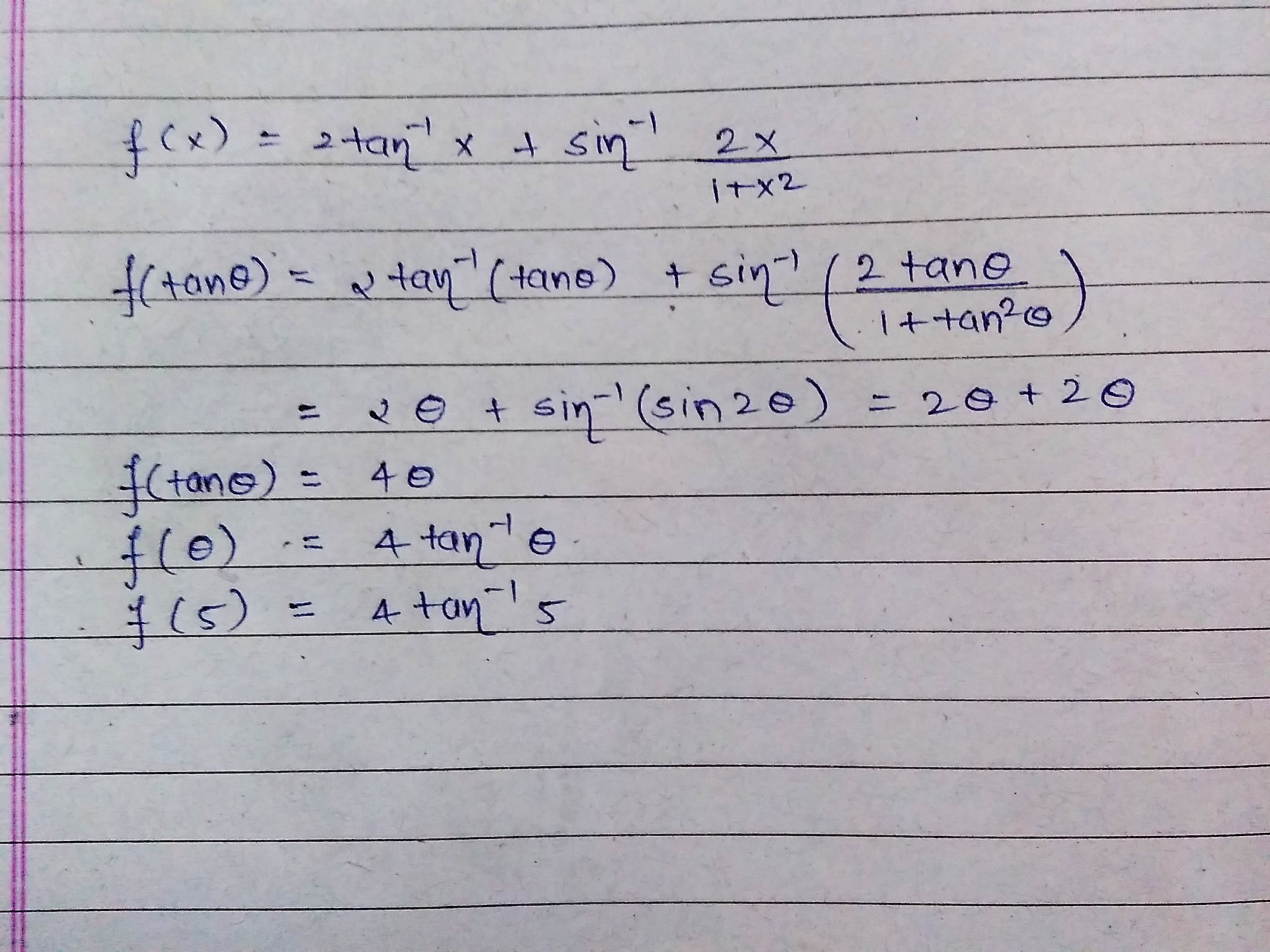



F X 2 Tan 1x Sin 1 2x 1 X 2 Then F 5
Tập xác định của hàm số y = 2x 1 − sin2x y = 2 x 1 sin 2 x là Câu hỏi trong đề 93 Bài tập trắc nghiệm Lượng giác lớp 11 có lời giải !!Integrate 1/(cos(x)2) from 0 to 2pi;1 2 √ x Since g g is not differentiable we cannot use the product rule f ′ (0) = lim h → 0 hg(h) h = 8 f ′ ( 0) = lim h → 0 h g ( h) h = 8 (b) f ′ (4) = lim h → 0 √5 − (x h) − 1 h = − 05 f ′ ( 4) = lim h → 0 √ 5 − ( x h) − 1 h = − 05 F ′ (0) = lim h → 0 f ( h) sin2h h h = lim h → 0 f(h)sin2h



Find Dy Dx Of The Following I Y Sin 1 2x 1 X 2 Ii Y Tan 1 3x X 3 1 3x 2 Sarthaks Econnect Largest Online Education Community




Y Sin 1 X 1 X Find Dy Dx Brainly In
Integrate x^2 sin y dx dy, x=0 to 1, y=0 to pi;We have , y = `sin^1(2^(x 1) 3^x)/(1 36^x)` y = `sin^1(2 6^x)/(1 6^(2x))` put `6^x = tanθ` ⇒ θ = `tan^1(6^x)` Now , y = `sin^1(2 tanθ)/(1Gv Nguyễn Thị Thu Phát trực tiếp 9 giờ trước Gv Kim Nhật Trung Phát trực tiếp 9 giờ trước Gv Thầy Nguyễn Trung Tâm Phát trực




Solved Find The Derivative Of The Function Y Sin 1 2x Chegg Com



The Inverse Sine Function
Solution Let y = sin 1 (2ax √ (1 – a 2 x 2 )) Put ax = sin θ So y = sin 1 (2sin θ √ (1 – sin 2 θ)) = sin 1 (2sin θ √cos 2 θ ) = sin 1 (2sin θ cos θ ) = sin 1 sin 2θ = 2θ = 2 sin 1 (ax)Well first of all the question given here is wrong It should have been sin (inv X) rather sinx So let's Solve the question For this you should know the formula of inverse trigonometric functions So sin^1 (2x/1x^2) Is the formula for Tan^1 (x) Diff Dy/Dx= d (Tan^11 by the chaine and power rule we obtain 1 2 ( sin ( 1 x 2)) − 1 / 2 cos ( 1 x 2) 2 x at first sin ( 1 x 2) by the power rule, then we get cos




Y Sin 1 Sqrt 1 X Sqrt 1 X 2 Then Dy Dx Youtube



Untitled Document
Graph y=2sin(1/2x) Use the form to find the variables used to find the amplitude, period, phase shift, and vertical shift Find the amplitude Amplitude Find the period of Tap for more steps The period of the function can be calculated using Replace with in the formula for period If y = sin1 x/√(1x 2), then (1x 2)dy/dx is equal to If y = tan 1 ( a cos x b sin x )/(b cos x a sin x),then dy/dx is equal to If y = tan 1 √((1sin x)/(1sin x)), then the value of dy/dx at x = π/6 is y = 2x 4 x 2 − 2x ⇒ y' = 8x 3 2x − 2 Untuk mencari turunan dari fungsi yang memuat bentuk akar atau




Ex 2 1 13 Mcq If Sin 1 X Y Then Chapter 2 Class 12 Inverse



Find Dy Dx Y Sin 1 2x 1 X 2 1 2 X 1 2 Sarthaks Econnect Largest Online Education Community
View more examples » Access instant learning tools Get immediate feedback and guidance with stepbystep solutions and Wolfram Problem Generator LearnWataru Step 1 Sketch the graph of \displaystyle {y}= {\sin { {x}}} Step 2 Horizontally shrink the graph in Step 1 by a factor of 2An, langkah pertama yang harus kita lakukan yaitu merubah terlebih dahulu fungsi tersebut ke dalam bentuk pangkat (eksponen)




Y Sin 1 2x 1 X 2 Find Dy Dxif Dy Dx 2cos 1xthis Is Class 12 The Problem Plz Help Brainly In




Ex 7 6 22 Integrate Sin 1 2x 1 X 2 Teachoo Ex 7 6
Integrate $\sin^{1}\frac{2x}{1x^2}$ The solution is given in my reference as $2x\tan^{1}x\log(1x^2)C$ But, is it a complete solution ? Transcript Ex 53, 9 Find 𝑑𝑦/𝑑𝑥 in, y = sin^(−1) (2𝑥/( 1 2𝑥2 )) 𝑦 = sin^(−1) (2𝑥/( 1 2𝑥2 )) Putting x = tan θ 𝑦 = sin^(−1This calculus video tutorial shows you how to find the derivatives if inverse trigonometric functions such as inverse sin^1 2x, tan^1 (x/2) cos^1 (x^2) ta



How To Solve 2sin 1 X Sin 1 2x Pi 2 Quora




Show That I Sin 1 2xsqrt 1 X 2 2sin 1 X 1 Sqrt 2 Lt Xlt 1 Sqrt 2 Ii Sin 1 2xsqrt 1 X 2 2cos 1 X 1 Sqrt 2 Lt Xlt 1
Y c = c 1 cos(4x) c 2 sin(4x) 1 g(x) = 7cos(2x) 9sin(2x) Both of these trig functions have the same argument, so we only need one pair of trig functions in our initial guess y p = Acos(2x) Bsin(2x) Since these trig functions have a di erent argument than the trig functions in y c, we don't have any overlap So, this is our nal guess Hey Hari, take 6^x=t sin^(1) { 2^(x1)3^x) / 136^x =sin^(1) { 2^x23^x) / (16^(2x)) =sin^(1) { 26^x) / (16^(2x)) =sin^(1) { 2t / 1t^2} now take t=tanyIntegrate x/(x1) integrate x sin(x^2) integrate x sqrt(1sqrt(x)) integrate x/(x1)^3 from 0 to infinity;




Draw The Graph Of Y Sin 1 X 2
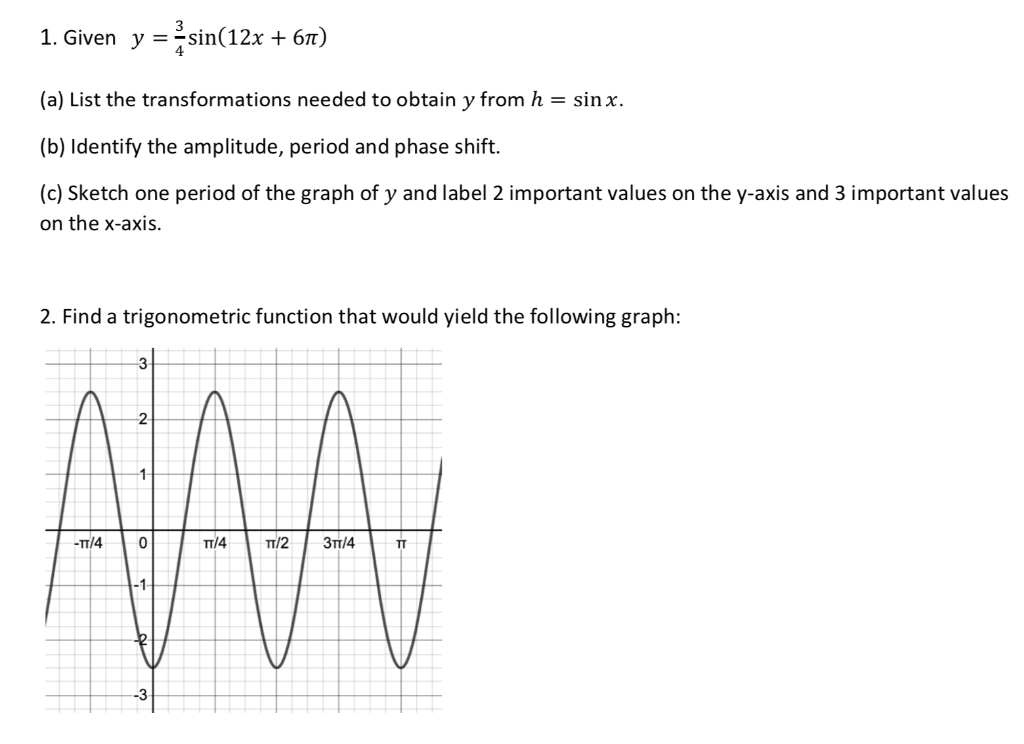



Solved 1 Given Y Sin 12x 677 A List The Chegg Com
Answer to Solved Let g(x,y)=sin(5x3y) 1 Evaluate g(1,−2) Who are the experts? The equation of the normal to the curve y = (1 x)y sin–1(sin2x) at x = 0 (a) x y = 2 (b) x y = 1 (c) x – y = 1 (d) x2 – y2 = 2 differentiation application of find the derivative of f given by f x is equal to Sin inverse X assuming it exist Kindly solve the question Please answer this question if x = sin 3 t/(cos 2t) 1/2, y = cos 3 t/(cos 2t) 1/2, find dy/dx explain in great detail




Ex 5 3 14 Find Dy Dx In Y Sin 1 2x Root 1 X2 Cbse




Prove That Sin 1 2x 1 X 2 2sin 1x X 1 2
Y = sin − 1 (1 x 2 2 x ) Differentiating above equation wrt x , we have d x d y = 1 − ( 1 x 2 2 x ) 2 1 ( ( 1 x 2 ) 2 2 ( 1 x 2 ) − 2 x ( 2 x ) )`y = sin^(1)((2x)/(1 x^2))`Welcome to Doubtnut Doubtnut is World's Biggest Platform for Video Solutions of Physics, Chemistry, Math and Biology Doubts wiMumbai University > First Year Engineering > sem 2 > Applied Maths 2 Marks 8 Year 13




Draw The Graph Of Y Sin 1 2x 1 X 2




Ex 5 3 9 Find Dy Dx In Y Sin 1 2x 1 2x2 Chapter 5
Free derivative calculator differentiate functions with all the steps Type in any function derivative to get the solution, steps and graphY = 2 x − 1 Swap sides so that all variable terms are on the left hand side Swap sides so that all variable terms are on the left hand side 2x1=y 2 x − 1 = y Add 1 to both sides Add 1 to both sides 2x=y1 2 x = y 1 if y = (1 sin2x/1 sin 2x) 1/2 show that dy/dx sec 2 (π/4 – x) = 0 donot go shortcut if y = log tan (∏/4 x/2) show that dy/dx = sec x donot go shortcut if y = log (x (1 x 2) 1/2 ) prove that dy/dx = 1/log (x (1 x 2) 1/2) 1/ (1 x 2) 1/2




Show That Sin 1 2x 1 X 2 Brainly In




Graph Of Y Sin 1 2 X In Urdu Hindi Youtube
Get an answer for '`y = x sin^1(x) sqrt(1 x^2)` Find the derivative of the function Simplify where possible' and find homework help for other Math questions at eNotes




Differentiate Sin 1 2x 1 X 2 W R T Tan 1 X




If Y Sin 1 2x 1 X 2 Sec 1 1 X 2 1 X 2 0ltxlt1 Prove That Dy Dx 4 1 X 2 B X 1




Prove That Cos 1 X 2 Sin 1 Sqrt 1 X 2 2 Cos 1 Sqrt 1 X 2 Youtube




If Y Sin 1 X 1 X2 1 2 Show That 1 Ndash X2 D2y Dx2 Ndash 3x Dy Dx Ndash Y 0 Explain In Great Detail Mathematics Topperlearning Com Wa3tv55
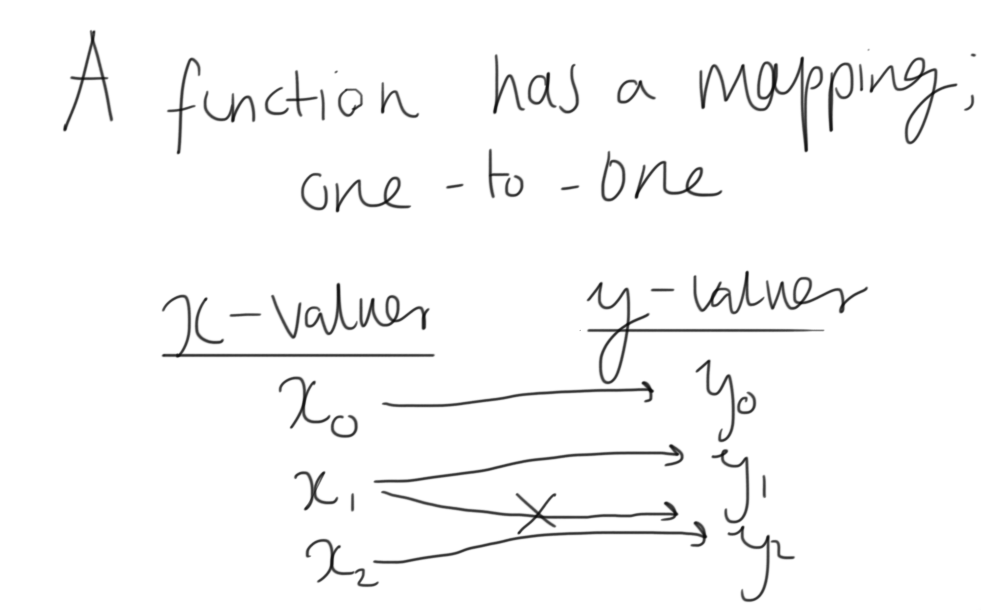



What Is The Domain And Range Of Y Sin 1 X Socratic




Ex 7 6 22 Integrate Sin 1 2x 1 X 2 Teachoo Ex 7 6




Q29 If Y Sin 1x 1 X2 1 2 Show That 1 X2 D2y Dx2 3x Dy Dx Y 0 Second Order Derivatives Youtube




15 Derivative Find Dy By Dx Of Y Sin 1 2x Under Root 1 X2 Youtube




Draw The Graph Of Y Sin 1 2x 1 X 2
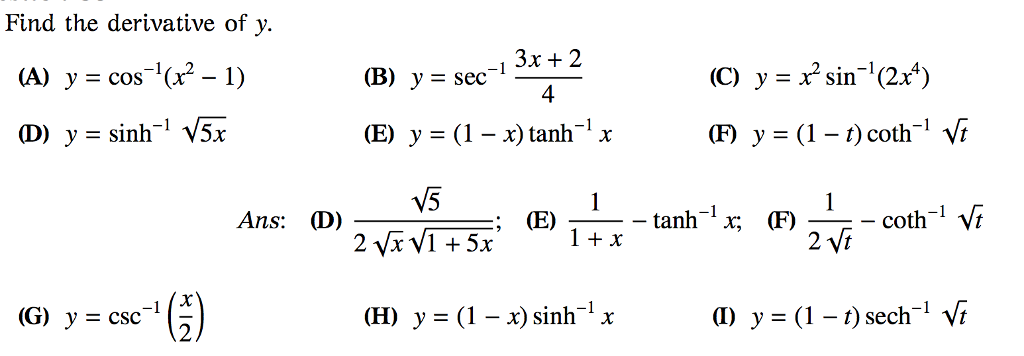



Solved Find The Derivative Of Y A Y Cos 1 X 2 1 Chegg Com




2 Sin Inverse X Formula In Terms Of Cos Elton Reynold




If You Are Seeing This Message That Means Javascript Has Been Disabled On Your Browser Please Enable Js To Make This App Work Please Enter A Question First Close Button Camera Button Send Button Loading Getting Image Please Wait Play Find Dydx



Inverse Trigonometric Functions Precalculus Ii




If Y Sin 1 2x 1 X 2 1 2 X 1 2 Then Dydx Is Equal To



Simplify Tan 1 2 Sin 1 2x 1 X 2 Cos 1 1 Y 2 1 Y 2 X 1 Y 0 And Xy 1 Sarthaks Econnect Largest Online Education Community



Pinkmonkey Com Trigonometry Study Guide Supplementary Problems




Solved Dy Dx For The Following Fourteen Problems Find Chegg Com
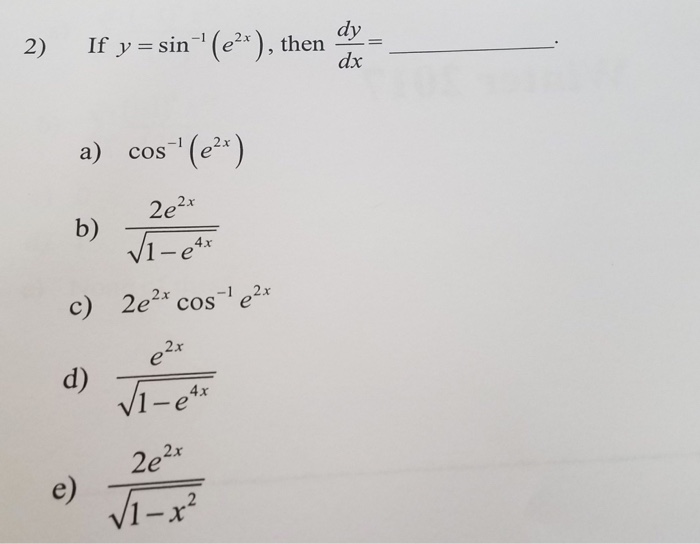



Solved If Y Sin 1 E 2x Then Dy Dx A Chegg Com
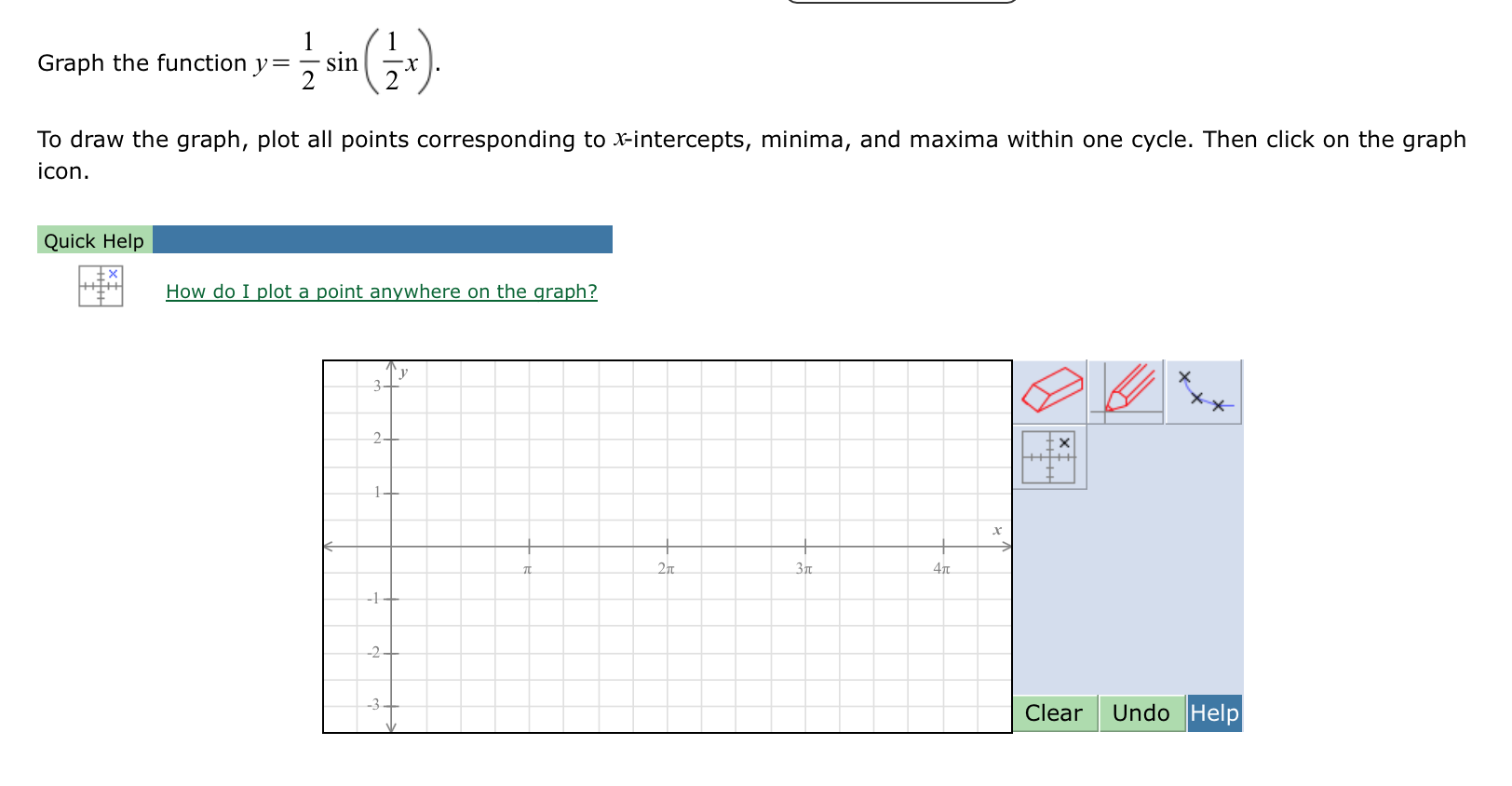



Solved Graph The Function Y 1 2 Sin 1 2 X To Draw The Chegg Com




If Y Sin 1 2x1 X 2 Sec 1 1 X 21 X 2 Show That Dydx 4 1 X 2




Ex 2 2 13 Inverse Trigonometry Tan 1 2 Sin 1 2x 1 X2




Differentiate Sin 1 2 X 1 3 X 1 36 X W I T Hr E S P E C Tt O Xdot



Find The Value Of Tan1 2 Sin 1 2x 1 X 2 Cos 1 1 Y 2 1 Y 2 X 1 Y 0 And Xy 1 Sarthaks Econnect Largest Online Education Community
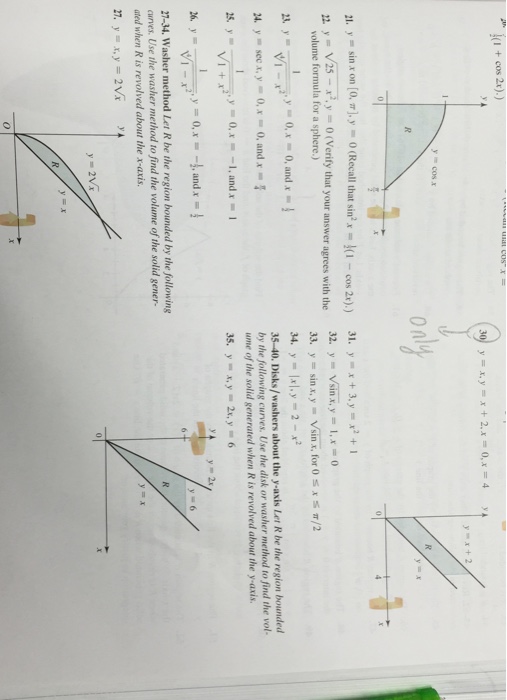



Solved Y Sin X On 0 Pi Y 0 Recall That Sin 2 X Chegg Com



Assignment 1 Exploring Sine Curves




Example 41 If Y Sin 1 X Show That 1 X2 D2y Dx2 X Dy Dx




Ex 7 6 22 Integrate Sin 1 2x 1 X 2 Teachoo Ex 7 6




Solved 49 60 Find The Derivative Of The Function Simplify Chegg Com
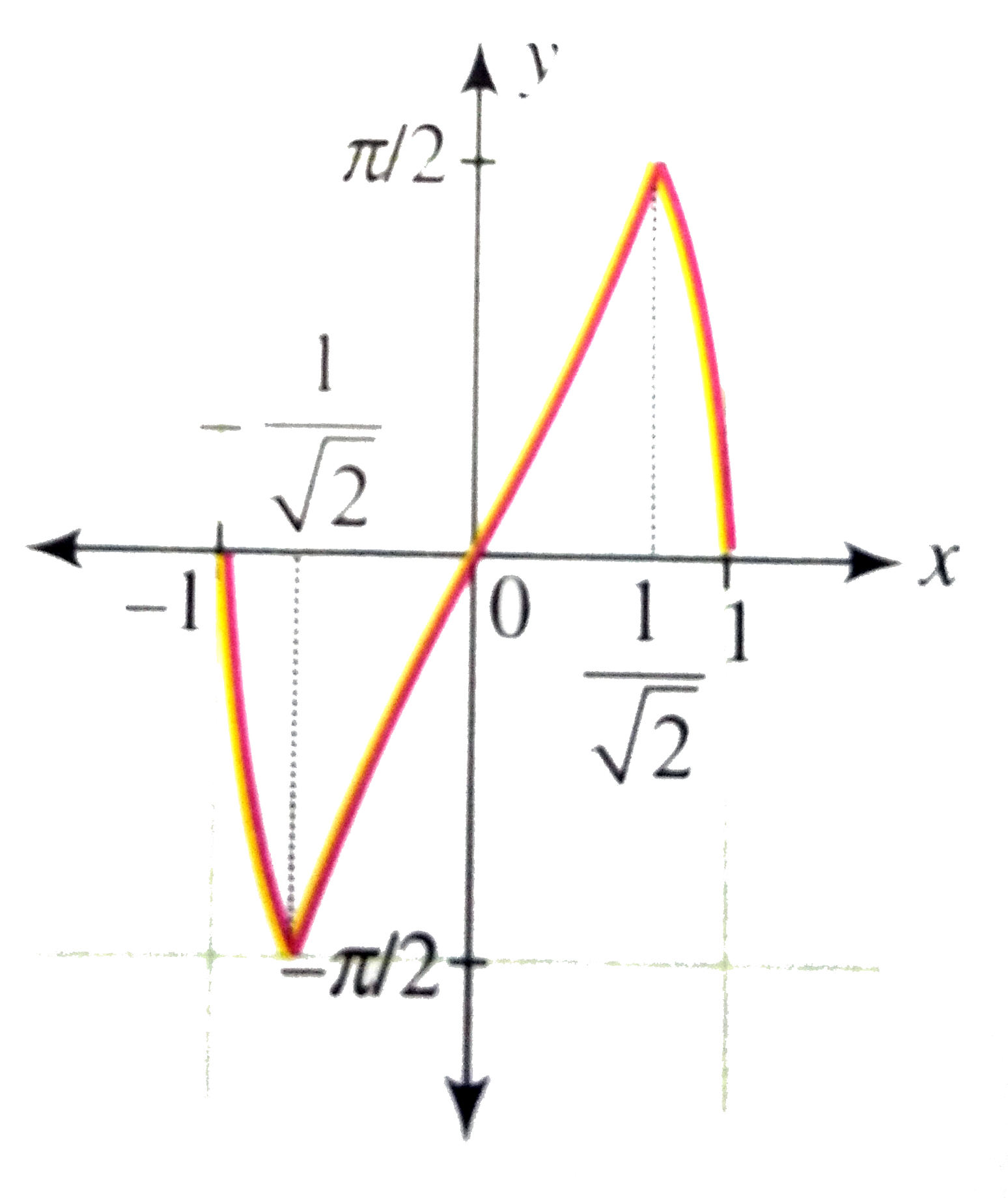



Draw The Graph Of Y Sin 1 2xsqrt 1 X 2




Ex 5 3 9 Find Dy Dx In Y Sin 1 2x 1 2x2 Chapter 5
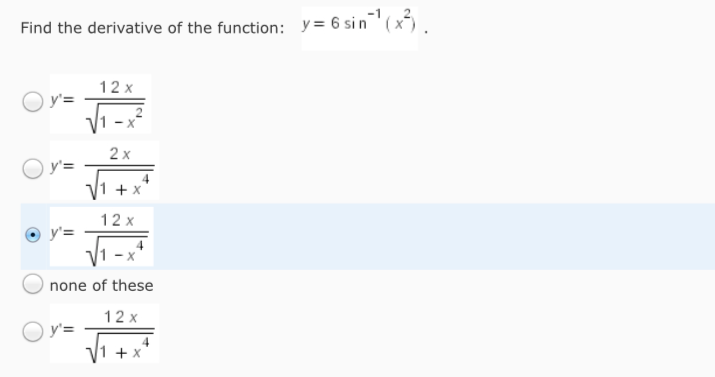



Solved Find The Derivative Of The Function Y 6 Sin 1 Chegg Com



Solution 1 A On The Same Set Of Axes Sketch And Label Graphs Of Y Sin 1 2 X And Y 2 Cos X As X Varies From 0 To 2 Pi Radians B Using
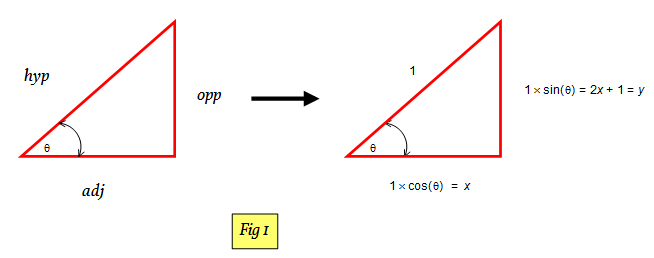



How Do You Find The Derivative Of Sin 1 2x 1 Socratic




If Y F 2x 1 X 2 1 And F X Sin X 2 Then Dy Dx Is Equal To




Solved Knowing That Y1 Cos 1 2x And Y2 Sin 1 2x Are Chegg Com



If Y Sin 1x 2 Cos 1x 2 Then Prove That 1 X 2 D 2y Dx 2 X Dy Dx 4 Sarthaks Econnect Largest Online Education Community




If Y Sin M Sin 1 X What Is The Value Of D 2 Y Dx 2 At X 0 Youtube



How To Find Derivative Of Y Sin 2x 1 X 2 Quora




Which Graph Represents The Function Y 2 Sin 1 2 X Look At The Graphs Below For The Answer Brainly Com



Assignment 1 Write Up



If Y Sin 12x 1 X 2 Then Which Of The Following Is Not Correct Sarthaks Econnect Largest Online Education Community




If Y Sin 1 2x 1 X 2 Then Dy Dx Is Equal T



1
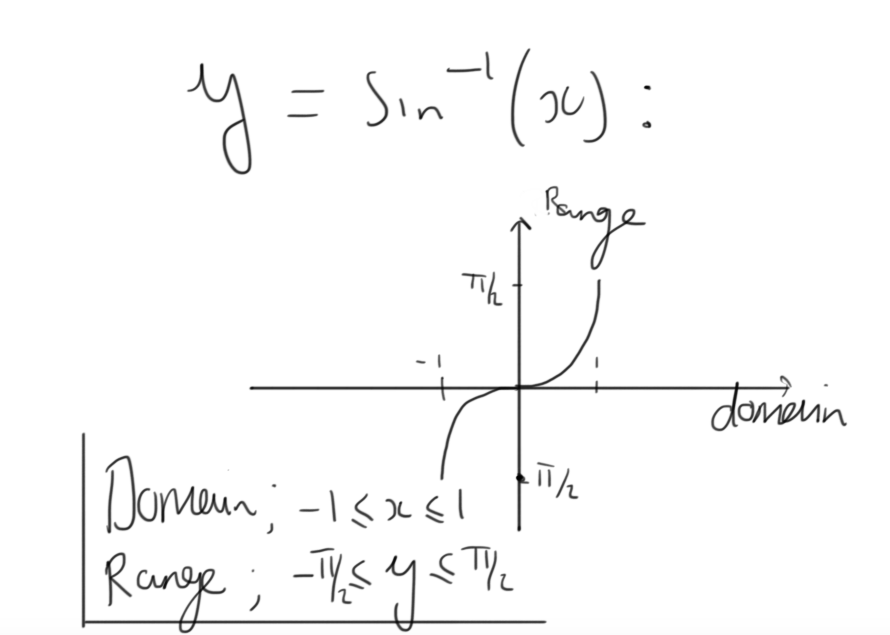



What Is The Domain And Range Of Y Sin 1 X Socratic




Find Dy Dx Of Y Sin 1 2x 1 X 2 1 2 Less Than X Less Than 1 2 Youtube



1
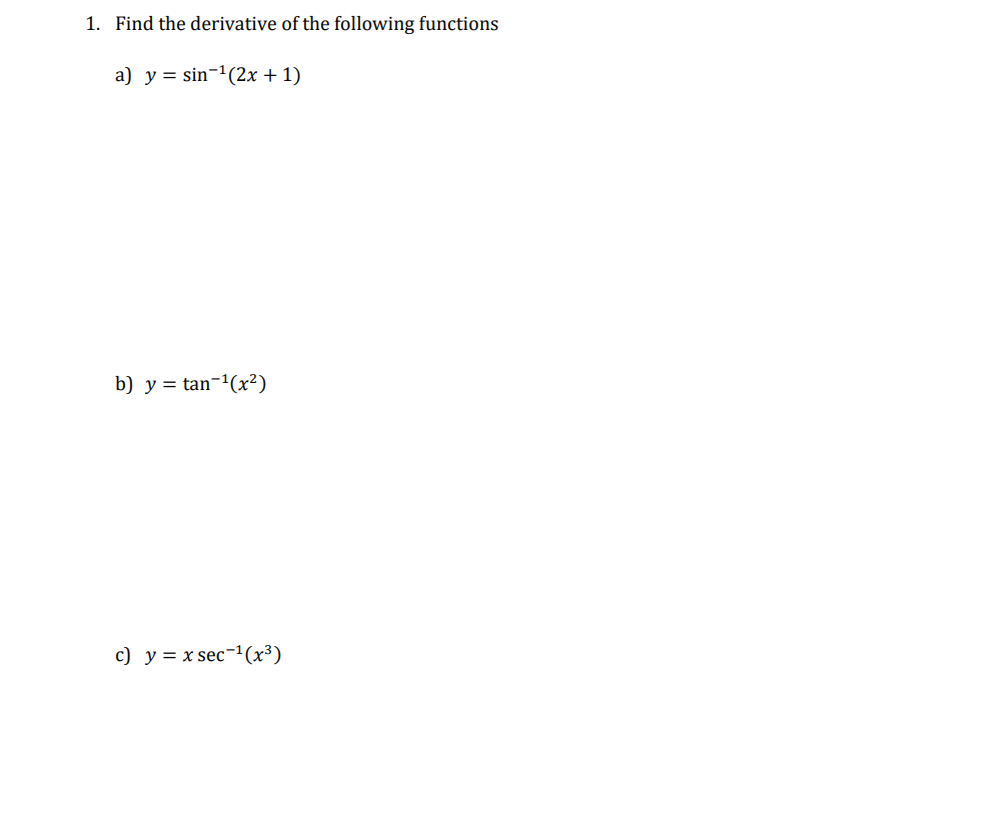



Solved 1 Find The Derivative Of The Following Functions A Chegg Com




Prove That Sin 1 2x 1 X 2 2cos 1x 1 2 X 1



If Y 2 Tan 1 X Sin 1 2x 1 X 2 For All X Then Y Sarthaks Econnect Largest Online Education Community




Sin 1 X And X Sin 1 X Limit Examples




Ex 7 10 3 Evaluate Integrals Sin 1 2x 1 X2 Dx Ex 7 10




If Y Sin 1 2x 2 1 Then Dy Dx



Pinkmonkey Com Trigonometry Study Guide 5 4 Graphs Of Trigonometric Functions



The Inverse Sine Function




Sin 1 Derivative 35 Images Exle 41 Derivative Of What S The Antiderivative Of Math 2x Math




Derivatives Of Inverse Trigonometric Functions Sin 1 2x Cos 1 X 2 Tan 1 X 2 Sec 1 1 X 2 Youtube



If Y 2 Tan 1 X Sin 1 2x 1 X 2 For All X Then Y Sarthaks Econnect Largest Online Education Community
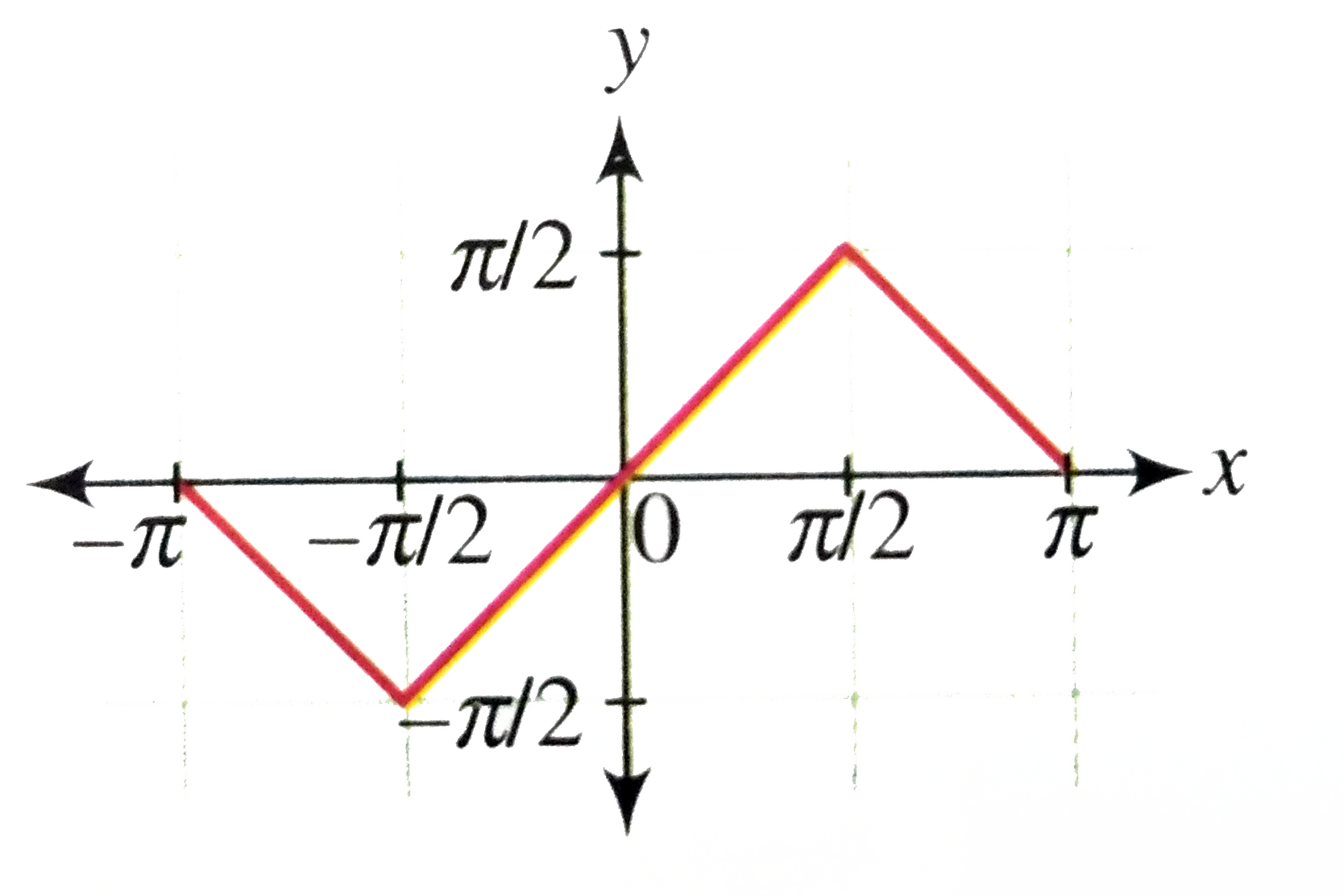



Draw The Graph Of Y Sin 1 2x 1 X 2




Graph Of Y Sin 1 2x 1 X 2 Youtube
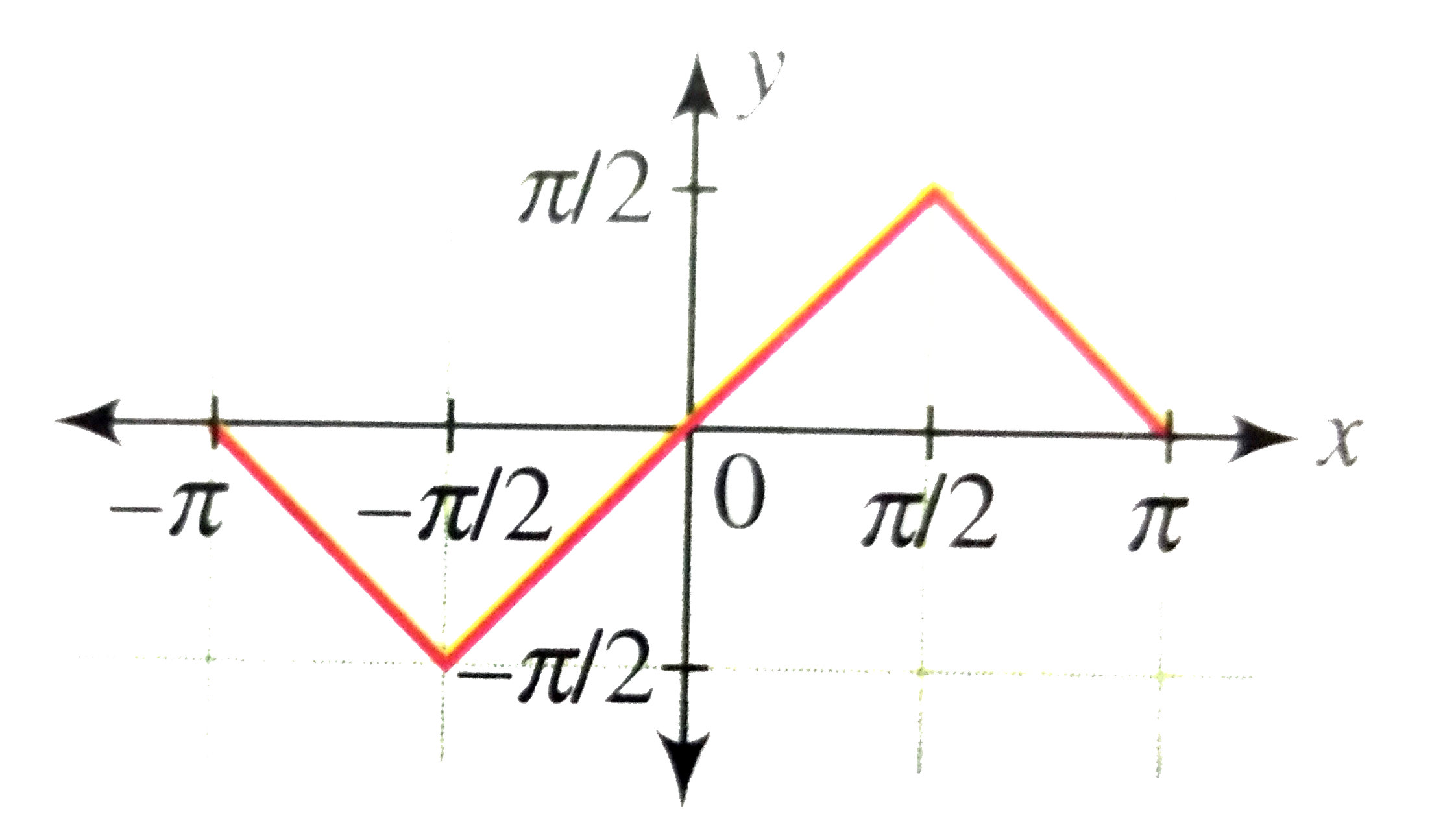



Draw The Graph Of Y Sin 1 2xsqrt 1 X 2




Y Sin 2sin 1x Prove That 1 X 2 Y2 Xy1 4y Maths Continuity And Differentiability Meritnation Com




If Y Sin 1 X Prove That 1 X2 D2y Dx2 X Dy Dx 0 Explain In Great Detail Mathematics Topperlearning Com Psl1owbb




Prove That Tan 1 1 2 Sin 1 2x 1 X2 Cos 1 1 Y2 1 Y2 X Y 1 Xy If Ixi 1 Y 0 And Xy 1 Maths Inverse Trigonometric Functions Meritnation Com




Solved 1 Evaluate The Following A Cos 1 3 D Sin 1 3 Chegg Com




Ex 7 6 22 Integrate Sin 1 2x 1 X 2 Teachoo Ex 7 6
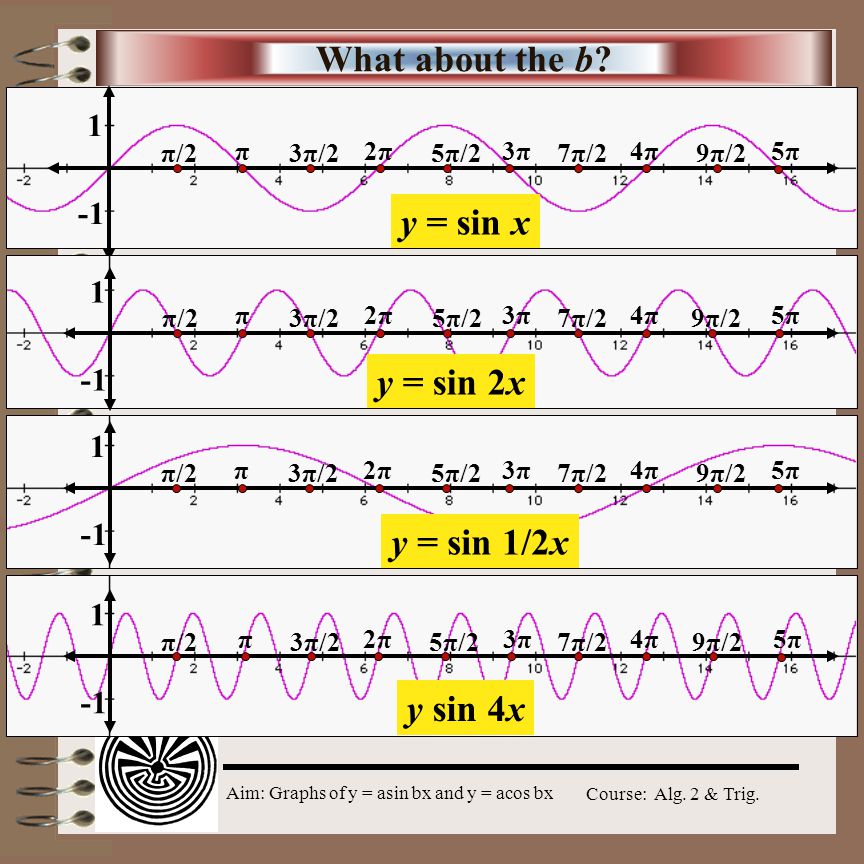



Aim What S The A In Y A Sin X All About Ppt Video Online Download




Tan11 Example 7 Show That I Sin 1 2x V Sin 1 2x 11 X2 2




Differentiate The Following W R T X Sin 1 2x 1 X 2



What Is The Difference Between Sin 1 X And Sin X 1 Quora




Solved 2 Y Sin X 1 2x A Y 1 X 1 1 B Y Y Chegg Com




Example 3 Show That Sin 1 2x 1 X 2 2 Sin 1 X Class 12



Differentiate Sin 1 2x 1 X 2 With Respect To Cos 1 1 X 2 1 X 2 If 0 X 1 Sarthaks Econnect Largest Online Education Community
コメント
コメントを投稿